Thingiverse
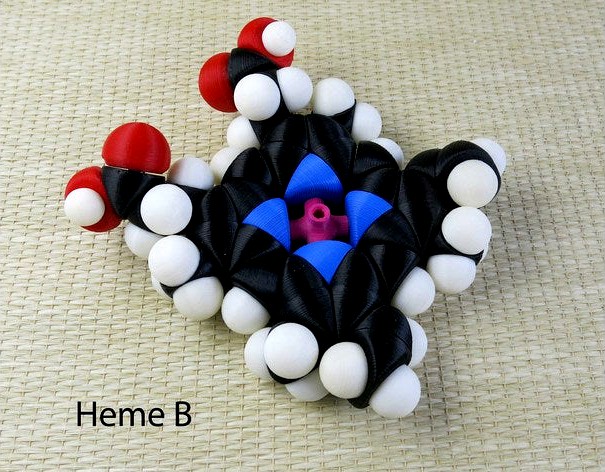
Space-filling molecular models: Transition Metal expansion pack by Harfigger
by Thingiverse
Last crawled date: 3 years, 3 months ago
This expansion set is at the request of wramsay, and a shout out for the request; it shows someone is interested. The transition metals are most of the metals that we think about as "metal;" that is, hard, shiney, and present in pure form (the period I and II metals are much too reactive to exist in pure form normally). The transition metals can form more bonds than you might expect because of their distinctive electron configuration; they can also form these in different configurations. I have included models for octahedral iron, tetrahedral copper and square planar platinum, but the truth is that most of the transition metals are about the same size, so you can use these models for pretty much any transition metal you like with the same configuraton. "OK, those don't look anything like your other atoms; they look more like plumbing fittings" I hear you exclaim. Yes, that's because they're not actually atoms; they're ions. My models are based on two measurements; the bond radius, which describes the electrons involved in the bond, and the Van der Waals radius, which describes where you will find the rest of the electrons. Practically all transition metals form compounds as positively charged ions, therefore the electrons are attracted closer to the nucleus and the Van der Waals radius is smaller than the bond radius (in fact it just fits in the enlarged hub at the center of the model). "I'll pretend I understood that, but do they really look like that?" Well, probably not. The electrons from the adjacent atoms probably fill in the extra space, so the model of copper chloride on the right is probably more accurate than the one on the left. That chlorine model doesn't play well with the other atoms though (it's also harder to print), so you're probably better off using your imagination. Nitroprusside is a medication sometimes used for high blood presssure. Cisplatin is a medication used to treat cancer. Heme B is the business end of hemoglobin and most other enzymes where you have a change in oxidation state. Other enzymes that change oxidation state often use iron-sulfur centers. These come in different flavors; I made the one with four irons and four sulfurs because it looked cool. The bond angles for the tetrahedrally bonded iron aren't all the same; the three off the build platform are different from the last one. See Moriarty and Adams, Acta Crystallographica D75:16-20 (2019) for more information. I should mention that I don't usually work with transition metals, so I may have gotten this slightly to spectacularly wrong. If so I would appreciate being corrected; references would be helpful. In addition to the metal models I have included the tri-valent sulfur for the iron-sulfur center, the spherical chlorine atom, and the aromatic linker that joins the four pyrole groups for heme B.
if you decide you want to print more molecules, check out the starter set (http://www.thingiverse.com/thing:1720048
), the carbon expansion set (http://www.thingiverse.com/thing:1730299
), the aromatic expansion set (http://www.thingiverse.com/thing:1754393
), halogen expansion set (http://www.thingiverse.com/thing:1730099
), nitrogen expansion set (http://www.thingiverse.com/thing:1753583
), and sulfur/phosphorous expansion set (http://www.thingiverse.com/thing:2350618
if you decide you want to print more molecules, check out the starter set (http://www.thingiverse.com/thing:1720048
), the carbon expansion set (http://www.thingiverse.com/thing:1730299
), the aromatic expansion set (http://www.thingiverse.com/thing:1754393
), halogen expansion set (http://www.thingiverse.com/thing:1730099
), nitrogen expansion set (http://www.thingiverse.com/thing:1753583
), and sulfur/phosphorous expansion set (http://www.thingiverse.com/thing:2350618
Similar models
thingiverse
free

Space-filling molecular models: Nitrogen expansion set by Harfigger
...com/thing:1730099), and the sulfur and phosphorous expansion set (http://thingaverse.com/thing:2350618) for more useful elements.
thingiverse
free

Space-filling molecular models: Carbon expansion set by Harfigger
...com/thing:1730099), and the sulfur and phosphorous expansion set (http://thingaverse.com/thing:2350618) for more useful elements.
thingiverse
free

Space-filling molecular models: Aromatic expansion set by Harfigger
...com/thing:1730099), and the sulfur and phosphorous expansion set (http://thingaverse.com/thing:2350618) for more useful elements.
thingiverse
free

Space filling molecular models: Starter set by Harfigger
...der gluing the atoms firmly together. they should be pretty hard to get apart, but they could be a choking hazard if it happens.
thingiverse
free

Space-filling molecular models: Halogen expansion set by Harfigger
...om/thing:1754393), and the sulfur and phosphorous expansion set (http://thingaverse.com/thing:2350618) for more useful elements.
thingiverse
free

Space-filling molecular models: Sulfur and Phosphorous expansion pack by Harfigger
...made that, they went together perfectly. i had a similar problem when i tried to attach the triphosphate group...
thingiverse
free

Space-filling molecular models: Caffeine Adventure Set by Harfigger
... (http://www.thingiverse.com/thing:1753583), and the sulfur and phosphorous expansion set (http://thingaverse.com/thing:2350618).
cults
free
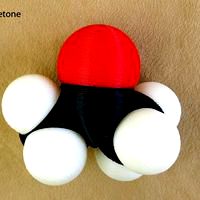
Space-filling molecular models: Carbon expansion set
...ink it looks better. perhaps this shouldn't be the first criterion to be considered, but it shouldn't be the last either.
cg_trader
$5

Dinitrogen molecule - Model
...ectron bond are scientifically correct(the van der waals radius was used). the download consists only of one model of dinitrogen.
cg_trader
$5

Water molecule - Model
...of electron bond are scientifically correct(the van der waals radius was used). the download consists only of one model of water.
Harfigger
thingiverse
free

Pointlessly complex gear device by Harfigger
...ruding struts of the supports and ring gear (should be a good friction fit). and you should be done.
http://youtu.be/3ugvun5kg5w
thingiverse
free

Space-filling molecular models: Halogen expansion set by Harfigger
...om/thing:1754393), and the sulfur and phosphorous expansion set (http://thingaverse.com/thing:2350618) for more useful elements.
thingiverse
free

Space filling molecular models: Starter set by Harfigger
...der gluing the atoms firmly together. they should be pretty hard to get apart, but they could be a choking hazard if it happens.
thingiverse
free

Space-filling molecular models: Nitrogen expansion set by Harfigger
...com/thing:1730099), and the sulfur and phosphorous expansion set (http://thingaverse.com/thing:2350618) for more useful elements.
thingiverse
free

Space-filling molecular models: Aromatic expansion set by Harfigger
...com/thing:1730099), and the sulfur and phosphorous expansion set (http://thingaverse.com/thing:2350618) for more useful elements.
thingiverse
free

Space-filling molecular models: Phenanthrene adventure pack by Harfigger
...t (http://www.thingiverse.com/thing:1753583), and sulfur and phosphorus expansion pack (http://www.thingiverse.com/thing:2350618)
thingiverse
free

Space-filling molecular models: Caffeine Adventure Set by Harfigger
... (http://www.thingiverse.com/thing:1753583), and the sulfur and phosphorous expansion set (http://thingaverse.com/thing:2350618).
thingiverse
free

Space-filling molecular models: Carbon expansion set by Harfigger
...com/thing:1730099), and the sulfur and phosphorous expansion set (http://thingaverse.com/thing:2350618) for more useful elements.
thingiverse
free

Space-filling molecular models: Sulfur and Phosphorous expansion pack by Harfigger
...n expansion set (http://www.thingiverse.com/thing:1730099), and nitrogen expansion set (http://www.thingiverse.com/thing:1753583)
Molecular
turbosquid
$25

Phospholipid Molecular
...d molecular model for download as max, max, fbx, 3ds, and obj on turbosquid: 3d models for games, architecture, videos. (1570946)
turbosquid
free

Molecular Chandelier
...chandelier for download as max, blend, max, max, fbx, and obj on turbosquid: 3d models for games, architecture, videos. (1658908)
turbosquid
$3

Melatonine -Molecular Model
...melatonine -molecular model for download as max, fbx, and obj on turbosquid: 3d models for games, architecture, videos. (1636394)
3ddd
$1
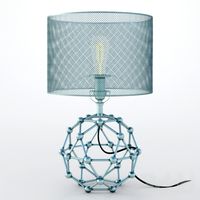
Molecular Table Lamp
...еры: 30,5см х 40,5см
производители:
- kathy kuo home
- regina andrew
в архиве 2 модели с разными материалами - латунь и никель.
turbosquid
$20

Glucose Molecular C6H12O6
...d molecular model for download as max, max, fbx, 3ds, and obj on turbosquid: 3d models for games, architecture, videos. (1542502)
turbosquid
$20

Bupropion Molecular C13H18ClNO
...model c13h18clno for download as max, max, fbx, 3ds, and obj on turbosquid: 3d models for games, architecture, videos. (1545545)
turbosquid
$20

Ephedrine Molecular C10H15NO
...ar model c10h15no for download as max, max, fbx, 3ds, and obj on turbosquid: 3d models for games, architecture, videos. (1545458)
turbosquid
$20

Choline Molecular C5H14NO+
...ar model c5h14no+ for download as max, max, fbx, 3ds, and obj on turbosquid: 3d models for games, architecture, videos. (1544165)
turbosquid
$15

Decane Molecular C10H22
...ular model c10h22 for download as max, max, fbx, 3ds, and obj on turbosquid: 3d models for games, architecture, videos. (1540942)
turbosquid
$100

Molecular Machine - Gear Shaft
... available on turbo squid, the world's leading provider of digital 3d models for visualization, films, television, and games.
Transition
3d_export
$10

Ford-transit
...ford-transit
3dexport
ford-transit van
turbosquid
$15

Transit Level
...quid
royalty free 3d model transit level for download as max on turbosquid: 3d models for games, architecture, videos. (1158112)
3d_ocean
$25
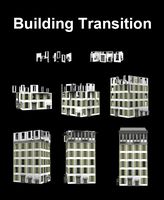
Building Transition
...on.can change all material and add texture. if you want only file .mov download here http://videohive.net/item/building-transi...
3ddd
free
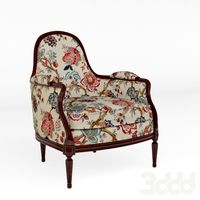
Gillesnouailhac Bergere Transition
... transition
кресло gillesnouailhac bergere transition.
размер l 69 − d 75 − h 97 − sh 42
turbosquid
$24

Road transition
... model road transition for download as max, max, fbx, and obj on turbosquid: 3d models for games, architecture, videos. (1599862)
turbosquid
$80

Transit-Fire
... available on turbo squid, the world's leading provider of digital 3d models for visualization, films, television, and games.
turbosquid
$10

TRANSITION PIPE.JPG
... available on turbo squid, the world's leading provider of digital 3d models for visualization, films, television, and games.
turbosquid
$6

Transit Collection
...ransit collection for download as skp, 3ds, dae, fbx, and obj on turbosquid: 3d models for games, architecture, videos. (1621198)
turbosquid
$4

The transition coil
... available on turbo squid, the world's leading provider of digital 3d models for visualization, films, television, and games.
3ddd
$1

Transition by Casali Armchair
...transition by casali armchair
3ddd
transition , casali
(w хlхh):71 x 88 x 100
Expansion
turbosquid
$42

Expansion tank
...d model expansion tank for download as 3ds, max, obj, and fbx on turbosquid: 3d models for games, architecture, videos. (1207393)
3d_export
$50

Expansion Joint 3D Model
...expansion joint 3d model
3dexport
expansion joint 3d model stargazer 4537 3dexport
turbosquid
$25
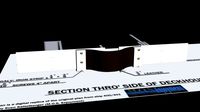
Titanic Expansion Joint
... available on turbo squid, the world's leading provider of digital 3d models for visualization, films, television, and games.
3d_export
$5
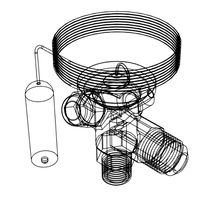
thermostatic expansion valve
...thermostatic expansion valve
3dexport
3d model stl of fusion 360.
3d_ocean
$15
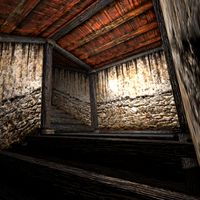
Dungeon Tileset01 Expansion 1
...m/dungeon-tileset01-base/4625640 including stairs, tiles to make large rooms and a new texture that works with the tiles in th...
turbosquid
$20

Cartoon Corgi Banana Costume Expansion Pack
...artoon corgi banana costume expansion pack for download as ma on turbosquid: 3d models for games, architecture, videos. (1445388)
3ddd
$1

Hichory chair Ingold Oval Expansion
...kitchen-furniture/1911-collection/i510089-ingold-oval-expansion-top-mahogany-and-185-11-ingold-3-leg-pedestal-base.aspx
turbosquid
$299

Sci-Fi Dark Space Game Kit plus Expansion Pack
... available on turbo squid, the world's leading provider of digital 3d models for visualization, films, television, and games.
3d_export
$5

Swedish wall
...swedish wall 3dexport swedish wall, expansion wall bars, stairs for children, horizontal bar for...
3d_export
$10

External HDD 3D Model
...hard disk drive external seagate usb storage hdd portable expansion data mobile external hdd 3d model nkfrds 47740...
Filling
3d_export
$14

8 Filling Head Filling Machine
...8 filling head filling machine
3dexport
8 filling head filling machine
3d_export
$7

filling machine
...ng position; there are many details, which are suitable for learning and viewing, and can be downloaded by your favorite friends.
turbosquid
$10

ladle filling
...quid
royalty free 3d model ladle filling for download as max on turbosquid: 3d models for games, architecture, videos. (1298994)
turbosquid
$5

Filling machine
...lty free 3d model filling machine for download as max and fbx on turbosquid: 3d models for games, architecture, videos. (1382952)
3d_ocean
$19

Croissant with filling
...d model of two croissants with chocolate filling – one is half eaten. 3d scanned from real product. placed on square white plate.
3d_ocean
$20

Cupcakes with filling
...f three cupcakes with cherry and vanilla filling. one is half cutted. 3d scanned from real product. placed on square white plate.
3d_ocean
$20

Waffles with filling
...3d model of three waffles with chocolate filling – one is half eaten. 3d scanned from real product. placed on square white plate.
3d_export
$10

ring for enamel filling
...ring for enamel filling
3dexport
ring for enamel filling. formats: max 20, stl.
3d_export
$6

filling wallpaper
..., hp printer, epson scanner,<br>logitech keyboard and mouse, diary,<br>magazine, smartphone, clock, calendar, poster.
3ddd
$1

Filling for table
...filling for table
3ddd
солонка , сервиз
наполнение на стол в восточном ресторане
Pack
3d_export
$5
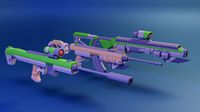
pack
...pack
3dexport
low poly pack
archibase_planet
free

Packing
...packing
archibase planet
wrapping wrapper packing
packing 2 - 3d model (*.gsm+*.3ds) for interior 3d visualization.
archibase_planet
free

Packing
...packing
archibase planet
packaging wrapping packing
packing 3 - 3d model (*.gsm+*.3ds) for interior 3d visualization.
archibase_planet
free

Packing
...packing
archibase planet
wrapper packing packaging
packing 4 - 3d model (*.gsm+*.3ds) for interior 3d visualization.
archibase_planet
free

Packing
...packing
archibase planet
packaging wrapping packing
packing 5 - 3d model (*.gsm+*.3ds) for interior 3d visualization.
archibase_planet
free
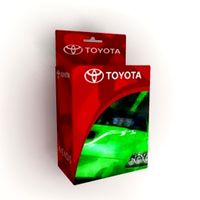
Packing
...packing
archibase planet
packing packaging wrapper
packing 7 - 3d model (*.gsm+*.3ds) for interior 3d visualization.
3d_export
$7
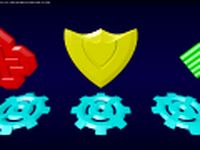
Health Pack Armor Pack and Ammo Pack 3D Model
...pack 3d model
3dexport
health armor ammo pack check point game
health pack armor pack and ammo pack 3d model u2501 99166 3dexport
3d_ocean
$79

Turrets Pack - Tower Defense Pack
...be used in any sf type of game, especially in tower defense games. the pack includes: - flack cannon: 6239 polygons - chain gu...
3d_export
$7

arbalet pack
...arbalet pack
3dexport
arbalet pack
3d_export
$5

rocks pack
...rocks pack
3dexport
rocks pack
Space
3ddd
free
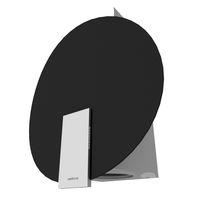
Space
... space , вытяжка
вытяжка elica space, производство elica evolution
3d_ocean
$19
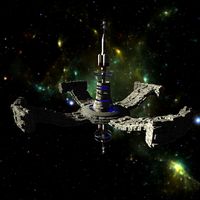
Space station
...space station
3docean
space station
space station
3d_ocean
$7

Space Fighter
...space fighter
3docean
fighter space
space fighter
turbosquid
$5

space
...e
turbosquid
royalty free 3d model space for download as max on turbosquid: 3d models for games, architecture, videos. (1184221)
turbosquid
$2

Space
...turbosquid
royalty free 3d model space for download as blend on turbosquid: 3d models for games, architecture, videos. (1660625)
3d_ocean
$4
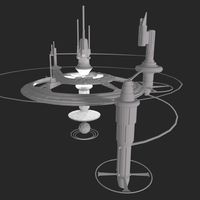
Space Station
...space station
3docean
habitat low poly ship space space ship space station vehicle
space station low poly modelled, not textured.
turbosquid
$2

Space
...royalty free 3d model space for download as max, fbx, and obj on turbosquid: 3d models for games, architecture, videos. (1644726)
turbosquid
$8

Space
...ty free 3d model space for download as c4d, 3ds, fbx, and obj on turbosquid: 3d models for games, architecture, videos. (1521166)
turbosquid
$160

space
... available on turbo squid, the world's leading provider of digital 3d models for visualization, films, television, and games.
turbosquid
$5

Space
... available on turbo squid, the world's leading provider of digital 3d models for visualization, films, television, and games.
Metal
3d_ocean
$10

Metal Barrel
...metal barrel
3docean
barrel barrels metal metal barrel wood barrel
metal barrel
turbosquid
$14

Metals
...als
turbosquid
royalty free 3d model metals for download as on turbosquid: 3d models for games, architecture, videos. (1486252)
3d_ocean
$18
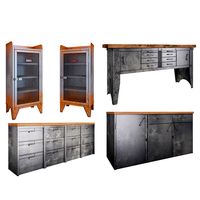
Metal Furniture
...metal furniture
3docean
design desk indoor industrial metal metal furniture restoration table
metal furniture 3d model
3d_export
$5

metal table
...metal table
3dexport
metal table.blend
3d_export
$5

Metal Shelf
...metal shelf
3dexport
metal shelf
3d_export
free

metal detector
...metal detector
3dexport
metal detector
3ddd
$1
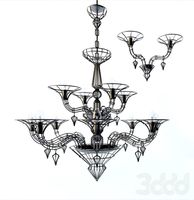
metal lux
...metal lux
3ddd
dedalo , metal lux
люстра и бра metal lux коллекция dedalo.
3ddd
$1
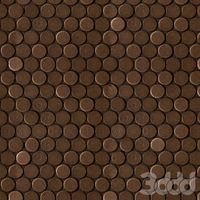
bonded metal
...bonded metal
3ddd
https://www.forms-surfaces.com/bonded-metal
boded tiled metal
3ddd
$1
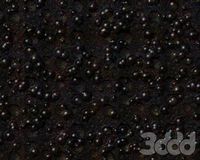
Metal
...metal
3ddd
1280-1024 бесшовный 8-)
3d_export
$5

cgaxis metal
...cgaxis metal
3dexport
notebook cgaxis metal
